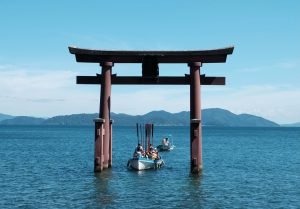It’s hard to resist the arresting sensation of melt-in-your mouth Japanese wagyu. These premium cuts of beef are a culinary luxury and gets its delicious flavour from a relatively high fat content. Yet when it comes to ordering the beef itself, it can be a little mind boggling. It’s not just the grade of wagyu we’re talking about here, but which prefecture it comes from. Here, we take the mystery out for you.

Look at the grade
Before we dive into the different prefectures, we need to get the Japanese wagyu grading system out of the way. Every menu that these premium cuts in it will indicate its quality. This consists of a letter and a number. The letter will reveal the Yield Grade and it ranges from A to C to indicate the quality of the meat. A of course is for the best quality. Next comes the number, placed on a scale of 1-5. This shows the level of marbling, colour, texture and quality of fat. Thus, if your menu is an A5 wagyu, you know that this is the cream of the crop of all wagyu cuts.

Where the beef is from
Three of the most common types of wagyu beef you will find in restaurant menus are Omi beef, which hails from Shiga Prefecture, Matsusaka beef from Mie Prefecture and Kobe beef from Hyogo Prefecture. The last has the reputation of being one of the most expensive cuts of beef on the planet, but that doesn’t mean the other two aren’t as great. In fact, the beef from all three regions hail from the same breed of cow, the Kuroge – or Japanese black.
Matsusaka beef
The Matsusaka region of Mie Prefecture is a pristine area located between Kumozu River in the north and the Miyagawa River in the south. The cows here fed a diet of wheat, barley and soy but the farmers are known to also feed them beer to increase their appetites. The cows are treated well; they’re given daily walks and a healthy exposure to the sun. Now and then, they are massaged with straw brushes to increase blood circulation. These cattle are indeed precious and only 2,500 cows are slaughtered per year. The meat is then sent for auction which explains why it is so expensive.
Omi beef
Omi beef is the oldest wagyu beef producer in Japan with a history dating back to the 1600s – it was the beef enjoyed by the Japanese samurai. Today, the cattle are raised around the tranquil Lake Biwa in Shiga Prefecture. This is the biggest freshwater lake in Japan and is also where the producers also draw its freshwater supply from. Unlike other regions, the cows in this prefecture feed on rice straw as the other predominant agricultural industry in this region is in rice farming. This results in a naturally fatty meat that’s high in oleic fatty acid. This form of fat has a low melting point of 16.3 degrees celsius.
Kobe beef
The most famous of all wagyu beef brands is Kobe beef, raised in Japan’s Hyogo Prefecture. This is also the most counterfeited wagyu abroad owing to its fame but the reality is that only 3000 certified Kobe Beef cattle are slaughtered per year and stores which carry a 10-digit number to identify which cow it came from. The cattle are raised on a diet of grains and grasses grown from within Hyogo Prefecture.










